#HernanCortes
Photo
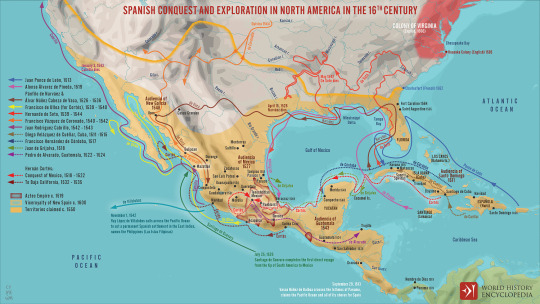
The Changing Interpretation of the Spanish Conquest in the Americas
The fall in 1519 of Tenochtitlan, the capital of the Mexica or Aztec Empire, as it was later called, laid the foundation for the Spanish colonial empire on the North American mainland. It was the first time that Europeans had subjugated a highly organized state outside the world they had hitherto known. In the process, they created the basis for the first global colonial empires.
Continue reading...
41 notes
·
View notes
Text

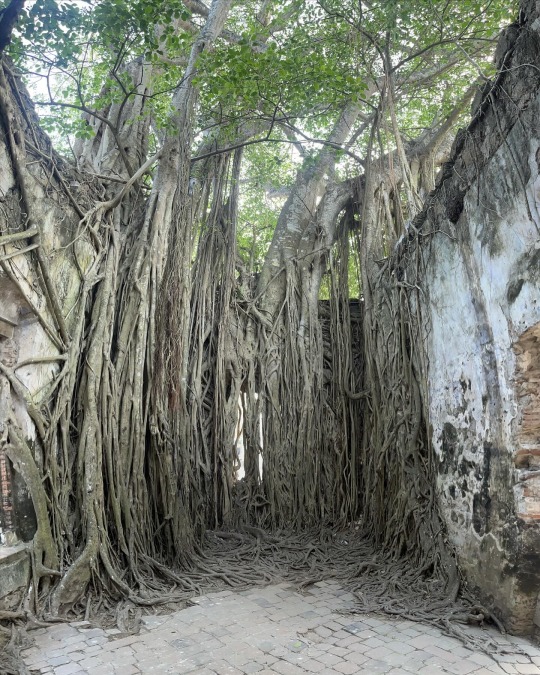


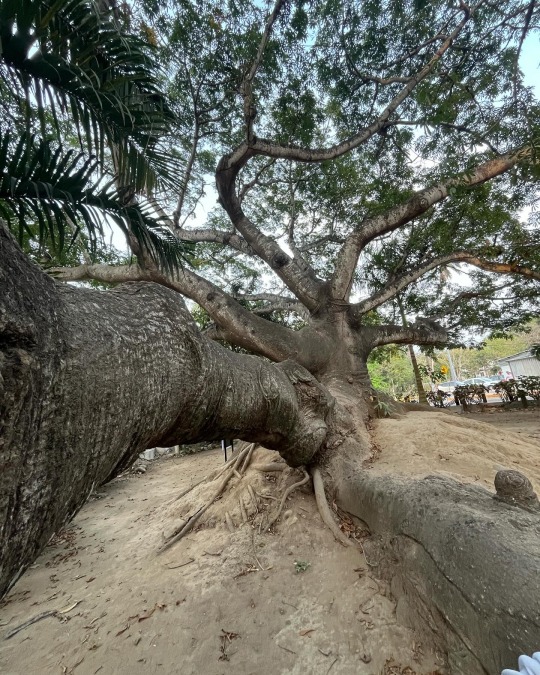
1ra casa de Hernán Cortes, la Antigva
#mexico#veracruz#laantigua#hernancortes#house#nature#plants#green#jungle#dope#roots#tree#trees and forests#ceiba
2 notes
·
View notes
Photo
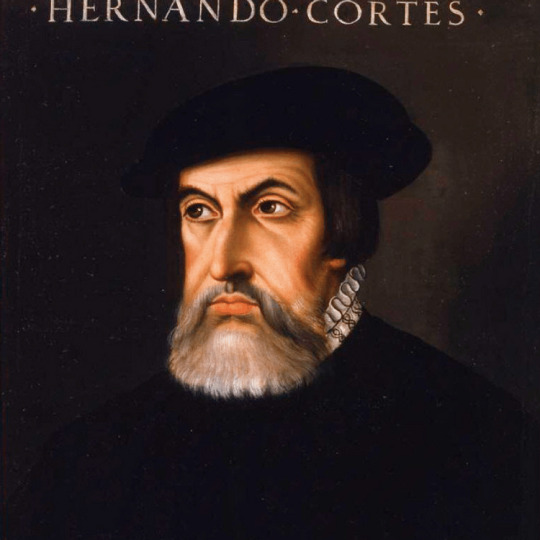
Hernán Cortés
Hernán Cortés (1485-1547) était un conquistador espagnol qui mena la conquête de l'empire aztèque au Mexique à partir de 1519. En prenant la capitale aztèque de Tenochtitlan en 1521, Cortés pilla la Mésoamérique et devint le premier dirigeant de la nouvelle colonie de la Nouvelle-Espagne.
Lire la suite...
2 notes
·
View notes
Photo

Fumo Youmu encounters a real nigga #fumo #fumoposting #fumotouhou #fumoyoumu #fumofumo #youmufumo #youmu #youmukonpaku #konpakuyoumu #touhou #touhoufumo #hernancortes https://www.instagram.com/p/ColjglaMCP_/?igshid=NGJjMDIxMWI=
#fumo#fumoposting#fumotouhou#fumoyoumu#fumofumo#youmufumo#youmu#youmukonpaku#konpakuyoumu#touhou#touhoufumo#hernancortes
0 notes
Text
Bibliography for ‘Rethinking The Prime Directive Of Star Trek’

Writers - Kyle Sullivan & Katie Boyer
Narration & Editing - Kyle Sullivan
There are many contributors to this video. We start by recognizing Isaac Zuren, who let us use footage from his insane short film,“The Encounter,” which is the most insanely cool depiction of the city of Tenochtitlan we have ever seen. You must watch it: https://www.artstation.com/artwork/qQzEr2
Access Isaac’s Artstation page here: https://www.artstation.com/isaaczuren
The video was made with input from Annelise Baer, Aisling Tierney, Brandon Fibbs, and Jay Manning. Annelise Baer and Dr. Aisling Tierney proofread this essay, offering thoughts and critiques which ended up in the final version. Their help is invaluable. You can find more about Annelise here: https://linktr.ee/annelisebaer. And Dr. Aisling Tierney: https://sites.google.com/view/archaeologyash?pli=1
Special Thanks - Alex Blocker, Irrum Fazal, Michael Goggin, Sam M, and all the rest of y’all who love and support Trekspertise. Thank you! Thank you very much, everyone!
Patrick Sullivan of Bone Yard Music provided some all-important and neat sounds. Go hire him to make music compositions for your next project: www.bymcustommusic.com. And check him out on YouTube: https://bit.ly/3wp2EVT
A big thank you to Leo Thompson and Garrett Wang over at Dragon Con’s Trek Track, where we got the chance to test this video essay’s concepts in front of a live audience of smart, engaging Star Trek fans. Thank you!
And a special thank you to Joseph Yracheta, the executive director of the Native Biodata Consortium, an indigenous-led biobank protecting the genetic and scientific data of indigenous people the world over from their homebase on the Cheyenne River Sioux Reservation. Joseph is the fella who read our credits in this video.
Additional thanks to the Daystrom Institute subreddit, a place dedicated to Star Trek discussion, and to www.memoryalpha.com, a Star Trek wiki. And to Trekcore, a treasure among Trek fans everywhere.
Do check out www.filmlore.no! FilmLore is a nerdy website all about science fiction, fantasy and fandom, with reviews, interviews and articles covering everything from the Lord of the Rings and Star Wars down to the silliest cult films about Killer Klowns. Go take a look!
Nahuatl translations and etymologies based on work by author David Bowles: https://davidbowles.medium.com/etymology-of-the-triple-alliance-18f5e7c4a228
Concorde-Wheel argument borrowed from Mexicolor: https://www.mexicolore.co.uk/aztecs/home/the-concept-of-the-wheel-in-ancient-mesoamerica
Discussions about European weapons and armor in Native American contexts can be found in two books by Charles C. Mann: “1491: New Revelations Of The Americas Before Columbus,” and “1493: Uncovering The New World Columbus Created.” Books available here: https://bit.ly/3ZBrizQ and here: https://bit.ly/3GHSXX6
Support Trekspertise on Patreon: https://www.patreon.com/trekspertise
Footage
“The Omega Glory”, Star Trek: The Original Series (TOS), 1968
“Symbiosis”, Star Trek: The Next Generation (TNG), 1988
“Time And Again”, Star Trek: Voyager (VOY), 1995
“Who Watches The Watchers”, Star Trek: The Next Generation (TNG), 1989
“Justice”, Star Trek: The Next Generation (TNG), 1987
“Pen Pals”, Star Trek: The Next Generation (TNG), 1989
“Star Trek”, 2009
“ABC World News Tonight”, July 25, 2000, accessed via Ben J. Ditzel YouTube Channel: https://bit.ly/3joRTPW
“The Encounter” by Isaac Zuren, accessed via: https://www.artstation.com/artwork/qQzEr2
Access Isaac’s Artstation page here: https://www.artstation.com/isaaczuren
“Strange New Worlds”, Star Trek: Strange New Worlds, 2022
“The Trouble With Edward”, Star Trek: Short Treks, 2019
Images
“Da Nang, Vietnam - A young marine private waits on the beach during the Marine landing. - August 3, 1965”, unknown author (probably a US Marine), 1965, uploaded by Armbust, 2014, accessed via: https://bit.ly/3iribR5
“The President's News Conference, Washington, D. C., State Department Auditorium”, Abbie Rowe, National Park Service, John F. Kennedy Presidential Library and Museum, Boston, 1961, uploaded by Hohum, 2019, accessed via: https://bit.ly/3VF5oZE
“U.S. Army Bell UH-1D helicopters airlift members of the 2nd Battalion, 14th Infantry Regiment”, James K. F. Dung, SFC, Photographer, 1966, uploaded by Madmax32, 2007, accessed via: https://bit.ly/3UoFHvr
“A female demonstrator offers a flower to military police on guard at the Pentagon during an anti-Vietnam demonstration”, By S.Sgt. Albert R. Simpson. Department of Defense. Department of the Army. Office of the Deputy Chief of Staff for Operations. U.S. Army Audiovisual Center, 1967, uploaded by Alinerawer, 2020, accessed via: https://bit.ly/3Vm8CBu
“President of USA Lyndon B. Johnson (r.) with Soviet Premier Alexei Kosygin”, by Yoichi R. Okamoto, 1967, LBJ Museum & Library, uploaded by Jatkins, 2010, accessed via: https://bit.ly/3OPIg8B
"Crack troops of the Vietnamese Army in combat operations against the Communist Viet Cong guerillas”, by the US Information Agency (now the Bureau of Public Affairs in the US Department of State), 1961, uploaded by BrokenSPhere, 2007, access via: https://bit.ly/3P7e0q5
“Captured communist photo shows VC crossing a river in 1966”, unknown author, found in George Esper’s book, The Eyewitness History of the Vietnam War 1961-1975, Associated Press, New York 1983, 1966, uploaded by Hohum, 2020, accessed via: https://bit.ly/3OZYUT1
“Gezicht op Nieuw Amsterdam”, by Johannes Vingboons, 1664, uploaded by Patrickneil, 2013, accessed via: https://bit.ly/3VXLvgE
“Washington Crossing The Delaware”, by Emanuel Gottlieb Leutze, 1851, uploaded by Aavindraa, 2012, accessed via: https://bit.ly/3Y4N0vg
“Napoleon Bonaparte in the coup d'état of 18 Brumaire in Saint-Cloud”, by Francois Bouchot; Bouchot, 1840, uploaded by TheHistoryBuff101, 2020, accessed via: https://bit.ly/3HmgMpp
“Portrait of Alexander von Humboldt”, by Friedrich Georg Weitsch, 1806, uploaded by Hohum, 2015, accessed via: https://bit.ly/3BIeRbh
“The Muir Portrait” of Adam Smith, unknown author, circa 1800, uploaded by Filetime, 2021, accessed via: https://bit.ly/3VYgFoF
“Portrait of Adam Ferguson”, by Sir Joshua Reynolds, 1781-82, uploaded by Wfrancome18 , 2008, accessed via: https://bit.ly/3FCjUvW
“Miniature of Prof John Millar, 1796, Scottish National Portrait Gallery”, photo by Stephencdickson, 2014, accessed via: https://bit.ly/3Bhhala
“On the barricades on the Rue Soufflot, Paris, 25 June 1848”, by Horace Emil Jean Vernet, 1848-49, uploaded by Niketto sr. , 2022, accessed via: https://bit.ly/3VM2iUe
“Columbia University Library”, 1903, unknown author, upload by Ineuw, 2011, accessed via: https://bit.ly/3uzCazY
“Portrait of Rudyard Kipling”, by Elliott & Fry, early 20th century, uploaded by DIREKTOR, 2015
“Portrait of William M. Gwin”, taken by Mathew Benjamin Brady, between circa 1844 and circa 1860, United States Library of Congress, accessed via: https://bit.ly/3WdvQtM
“Ku Klux Klan Parade”, 1926, United States Library of Congress, accessed via: https://bit.ly/3HtQFgm
“Senator James Eastland (D-MS) with President Lyndon B. Johnson”, 1968, White House photo, accessed via: https://bit.ly/3BVXHXN
“The Signing of Peace in the Hall of Mirrors, Versailles 1919”, by Sir William Newenham Montague, Gulielmus Orpen, 1919, uploaded by Malcolm77, 2012, accessed via: https://bit.ly/3G01DZV
“Episode of the September Days 1830 (on the Grand Place of Brussels)”, by Egidius Karel Gustaaf Wappers, 1835, uploaded by Szilas, 2008, accessed via: https://bit.ly/3j9xUoq
“Danish soldiers return to Copenhagen, 1849”, by Otto Bache, 1894, uploaded by BigMittens, 2015, accessed via: https://bit.ly/3hvISEf
“Burke and Wills, Crossing Lodden Plains”, by Samuel Thomas Gill, 1860-61, State Library of New South Wales, accessed via: https://bit.ly/3BUCmOb
“Burke and Wills, Discovery of King with the help of Aborigines”, by Samuel Thomas Gill, 1860-61, State Library of New South Wales, accessed via: https://bit.ly/3BUCmOb
“Burke and Wills, Crossing the Stony Desert”, by Samuel Thomas Gill, 1860-61, State Library of New South Wales, accessed via: https://bit.ly/3BUCmOb
“Burke and Wills, Arrival at Carpentaria”, by Samuel Thomas Gill, 1860-61, State Library of New South Wales, accessed via: https://bit.ly/3BUCmOb
“Burke and Wills, Return to Cooper's Creek”, by Samuel Thomas Gill, 1860-61, State Library of New South Wales, accessed via: https://bit.ly/3BUCmOb
“Arrival of Burke, Wills and King at the deserted camp at Cooper's Creek, Sunday evening, 21st April 1861”, by John Longstaff, 1907, uploaded by Adam Cuerden , 2022, accessed via: https://bit.ly/3v8UlfW
“Burke and Wills, Death of Bourke”, by Samuel Thomas Gill, 1860-61, State Library of New South Wales, accessed via: https://bit.ly/3BUCmOb
“Burke and Wills, Death of Wills”, by Samuel Thomas Gill, 1860-61, State Library of New South Wales, accessed via: https://bit.ly/3BUCmOb
“Australian Aboriginal Man”, (identity unknown) taken by Henry King, ~1880
“Portrait of William J Wills”, by Thomas Adams Hill, State Library of New South Wales uploaded by Jay D. Easy , 2019
“Concorde landing Farnborough Fitzgerald”, taken by Steve Fitzgerald, 1974, uploaded by Russavia, 2011, accessed via: https://bit.ly/2VRyZ3g
“The History of Mexico”, by Diego Rivera, 1929-1935
“Aztec glyphs for the member-states of the Aztec Triple Alliance”, modern version created by XcepticZP / Goldenbrook, 2014, with recent adjustments by Alphathon, Illegitimate Barrister, Goldenbrook, all based on unknown Mexica authors in codices
“Codex Mendoza depicting the coat of arms of Mexico”, unknown author, 1541, uploaded by Ixtal, 2021
“National Museum of Anthropology in Mexico City. Reconstruction of an Aztec market in Tenochtitlan”, photo by Wolfgang Sauber, uploaded by Xenophon, 2009
“Totocalli, the zoo of Mexico-Tenochtitlan, part of the palace of Montezuma II”, Manuscript by Bernardino de Sahagún. Illustration by an unknown artist, 1577, uploaded by ErickTErick, 2022
“Bathers perspire in a temazcal”, mid-1500s, Codex Magliabechiano
“Royal Gardens in Tenochtitlan, the Aztec Captial”, by Scott and Stuart Gentling, Scott and Stuart Gentling Papers, Amon Carter Museum of American Art Archives, Fort Worth, Texas, https://bit.ly/3WlgIef
Various illustrations from "L'Amérique. La Vie privee des Hommes - Au temps des Mayas, des Aztèques et des Incas”, by Pierre Joubert (book written by Louis-Rene), 1981
“View of the central ceremonial city plaza in the Aztec captial of Tenochtitlan”, by Scott and Stuart Gentling, Scott and Stuart Gentling Papers, Amon Carter Museum of American Art Archives, Fort Worth, Texas, https://bit.ly/3WlgIef
“Sacred Plaza of Tenochtitlan”, by Scott and Stuart Gentling, Scott and Stuart Gentling Papers, Amon Carter Museum of American Art Archives, Fort Worth, Texas, https://bit.ly/3WlgIef
“Aztec Aqueduct and Causeway, Tenochtitlan”, from - Les Voyages d'Alix Les Aztèques, by Martin & Jean Torton with illustrations by Jacques Martin, 2005
“A bustling marketplace in the Aztec capital of Tenochtitlan”, by H. Tom Hall, National Geographic, 1987
“Depiction of a Palace in the Highlands outside of Tenochtittlan”, by Scott and Stuart Gentling, Scott and Stuart Gentling Papers, Amon Carter Museum of American Art Archives, Fort Worth, Texas, https://bit.ly/3WlgIef
“Air France Concorde”, by ALexander Johnson, 20023, uploaded by Russavia , 2011, accessed via: https://bit.ly/3C84HRr
“British Airways Concorde official handover ceremony”, by Steve Fitzgerald, 1976, uploaded by Russavia , 2011, accessed via:https://bit.ly/3jCCH1C
“Aztec (Mexica) Gallery, INAH, National Museum of Anthropology, Mexico City”, taken by Gary Todd, 2012, uploaded by Chronus, 2022, accessed via: https://bit.ly/3GrDTy7
Inka Map compiled from several other maps: primarily from Manco Capac (road map: https://bit.ly/3FXK23u) and QQuantum (territorial expansion map: https://bit.ly/3CaIMc0)
World Map of 1493 derived loosely from a map in “1493: Uncovering The New World Created By Columbus”, by Charles C. Mann, 2011
“Part of the Inca Trail to Machu Picchu, paved with stones”, taken by Mx._Granger, 2017, accessed via: https://bit.ly/3vvcDse
Photo of Inka road in Cusco, taken by Crystal Luxmore, 2012, accessed via: https://bit.ly/3Cc9SQ6
“Qapaq Nan on causeway from Chucuito”, taken by Aga Khan (IT), 2018, accessed via: https://bit.ly/3WRfHue
View of Machu Picchu, taken by Gregory Laurent, 2018, accessed via: https://bit.ly/3Q25Boe
“Wiñay Wayna Inca Site”, taken by Bex Walton, 2018, accessed via: https://bit.ly/3YY9DSC
“Yacata en Michoacán”, taken by MaloMalverde, 2012, accessed via: https://bit.ly/3G5g3qn
Pueblo Bonito, Chaco Canyon, taken by Mobilus In Mobili, 2021, accessed via: https://bit.ly/3vxEo32
Shot of Moundville at sunrise, by Sean Shore, The University of Alabama's Strategic Communications, accessed via: https://bit.ly/3FXRE64
“Retrato de Hernán Cortés”, unknown author, 18th century, uploaded by Alonso de Mendoza, 2017, accessed via: https://bit.ly/3QcXZ2e
“Conquista de México por Cortés”, unknown author, second half of 17th century, uploaded by Artanisen, 2021
“Map of the Aztec Empire lead by Tenochtitlan circa 1519, before the arrival of the Spanish”, Yavidaxiu, 2010, accessed via: https://bit.ly/3Ihl95H
“The Tlaxcalan Senate”, by Rodrigo Gutiérrez, 1875, uploaded by DcoetzeeBot, 2013, accessed via: https://bit.ly/3i9ongO
“Aztec ruler Xicoténcatl and Hernán Cortés on the Lienzo de Tlaxcala”, Diego Munoz de Camargo, et al., 16th century , uploaded by ErickTErick, 2021, accessed via: https://bit.ly/3jNQKlg
“Storming The Teocalli”, by Emanuel Gottlieb Leutze, 1848, uploaded by Alonso de Mendoza , 2017, accessed via: https://bit.ly/3IgmOsa
“The Last Days of Tenochtitlan”, by William De Leftwich Dodge, 1899, uploaded by Infrogmation, 2008, accessed via: https://bit.ly/3Q9tomd
“La Captura de Atahualpa”, by Juan Lepiani, circa 1920-1927, uploaded by Artanisen, 2022, accessed via: https://bit.ly/3jSplPa
“The Spanish Calvary Breaks the Mexica Line”, by Peter Dennis, Tenochtitlan 1519–21”, Osprey Publishing, 2018
“Codex mendoza Folio”, mid-16th Century, uploaded by Ptcamn~commonswiki, 2006, accessed via: https://bit.ly/3Z59a13
“Aztec Warrior Gear”, by Peter Dennis, Tenochtitlan 1519–21”, Osprey Publishing, 2018
“Testing Bullet Proof Vest”, National Photo Company, 1923, uploaded by Fordmadoxfraud, 2008, accessed via: https://bit.ly/3VK1YEz
“Modular Tactical Vest Okinawa”, taken by Sgt. Ethan E. Rocke, 2007, uploaded by Sometrager, 2012, accessed via: https://bit.ly/3WNDyv5
“Erik XIVs rustning från 1562”, photo taken by Göran Schmidt in 2014 or earlier, accessed via: https://bit.ly/3IpQvXY
“US Navy 071211-N-9623R-010 Seabees attached to Naval Mobile Construction Battalion”, taken by U.S. Navy photo by Mass Communication Specialist 2nd Class Kenneth W. Robinson, 2007, uploaded by BotMultichillT, 2009, accessed via: https://bit.ly/3ZfHtTo
“La entrada de Hernan Cortes en Tenochtitlan”, by Augusto ferrer dalmau, 2020, uploaded in 2021, accessed via: https://bit.ly/3IkwSjT
“Arquebuse à rouet, Nuremberg, 1671. Dépôt du Musée de l'Armée. Inv : 2007.0.305 / M220”, taken by Tylwyth Eldar, 2019, accesse via: https://bit.ly/3Iq83TQ
“The Battle Of Otumba”, unknown author, mid-17th Century, uploaded by Ptcamn~commonswiki, 2009, accessed via: https://bit.ly/3VR3zZj
“Desfaite des Yroquois au Lac Champlain”, by Samuel de Champlain, 1613, uploaded by Pierre5018, 2014, accessed via: https://bit.ly/3ieUlbF
“El rapto (El Malón)”, by Johann Moritz; Rugenda, 1834, uploaded by Rec79, 2020, accessed via: https://bit.ly/3X3odq2
Queen Anne Silex pistol, 1760, uploaded by Rama, 2010, accessed via: https://bit.ly/3VLh7FD
Pennsylvania / Kentucky Flintlock Rifle, 1810, uploaded by File Upload Bot (Kaldari), 2012, accessed via: https://bit.ly/3CqWtns
“Captain John Smith”, 1880, Emmet Collection of Manuscripts Etc. Relating to American History, New York Public Library’s Digital Library, uploaded by Fæ, 2016, accessed via: https://bit.ly/3jSvMSb
“The Village Of Pomeioc”, author unknown, 1585, uploaded by Tungsten , 2013, accessed via: https://bit.ly/3ilhCIT
“King Powhatan's daughter Pokahontas beggs Smith's life”, 1624, uploaded by Pierre5018 , 2018, accessed via: https://bit.ly/3vFyXiD
“John Smith Captured”, by Elmer Boyd Smith, 1906
“John Smith taking the King of Pamunkey prisoner”, Robert Vaughan, 17th Century, uploaded by Pierre5018, 2018, accessed via: https://bit.ly/3Zhhzye
“Aztec drawing of smallpox victims”, 16th Century, uploaded by Graham Beards, accessed via: https://bit.ly/2Cg2uS1
“Native American medicine man caring for an ill Native American”, by Captain Samual Eastman, 1857, uploaded by Smgaynor , 2009, accessed via: https://bit.ly/3GkNF3B
“The Emerald Mound”, by Kaotate, 2016, accessed via: https://bit.ly/3VSDER9
“O desembarque dos portuguezes no Brazil ao ser descoberto por Pedro Alvares Cabral em 1500”, Roque Gameiro, 1900, uploaded by JotaCartas, 2016, accessed via: https://bit.ly/3iGlNz0
“Fundación de Santiago”, Pedro Lira, 1888, uploaded by Alonso de Mendoza , 2016, accessed via: https://bit.ly/3XmO5NS
“Cook Island Annexation”, unknown photographer, 1900, uploaded by Afrodita nz, 2011, accessed via: https://bit.ly/3ixs28j
“Stand With Standing Rock SF”, Pax Ahimsa Gethen, 2016, uploaded by Funcrunch , 2016, accessed via: https://bit.ly/3vYT0c5
“The Sounds of Earth Record Cover”, NASA / JPL, 1977, uploaded by Mattes, 2012, accessed via: https://bit.ly/3XnukFW
“Pioneer Plague”, NASA, 1972, uploaded by BotMultichillT , 2006, accessed via: https://bit.ly/3GYTx4c
“Launch of Artemis 1”, NASA/Joel Kowsky, 2022, uploaded by Huntster, 2022, accessed via: https://bit.ly/3Xr5MM9
“Earth rising behind the Moon”, Artemis 1 mission, NASA Johnson, uploaded by Spaceman2288, 2022, accessed via: https://bit.ly/3GYan39
“Eugene Cernan on the Moon, Apollo 17”, NASA / Harrison H. Schmitt, 1972, uploaded by Craigboy, 2011, accessed via: https://bit.ly/3IGYGz6
“Dancing Secotan Indians in North Carolina”, by John White, 1585, uploaded by AnonMoos, 2018, accessed via: https://bit.ly/3QEGxUI
“Yaxchilan Lintel 15”, photo by Michel wal, 2008, accessed via: https://bit.ly/3vXUZNJ
“Dog attack during protest”, Bill Hudson / AP, 1963
“World Map”, Abraham Ortelius, 1570, uploaded by Gabagool, 2009, accessed via: https://bit.ly/3kbfrrV
“The Mill Yard”, William Clark, 1823, uploaded by Jheald, 2014, accessed via: https://bit.ly/3iALcu5
“Alexander von Humboldt und Aimé Bonpland am Fuß des Vulkans Chimborazo”, Friedrich Georg Weitsch, 1806, uploaded by Laserlicht, 2018, accessed via: https://bit.ly/3CNQuJx
“Códice Casanatense, depicting a Hindu ritual of self-sacrifice”, 1540, uploaded by Wareno, 2017, accessed via: https://bit.ly/3X6AcDS
“Remarkable description and original illustration of a foreign, unknown people” (likely Inuit peoples), 1578, uploaded by Zentralbibliothek Zürich, 2013, accessed via: https://bit.ly/3IQ8G9c
“Pizarro Seizing the Inca of Peru”, John Everett Millais, 1846, uploaded by BoH, 2018, accessed via: https://bit.ly/3H2PHa7
“The Slave Trade (Slaves on the West Coast of Africa)”, François-Auguste Biard, 1833, uploaded by Trzęsacz, 2015, accessed via: https://bit.ly/3CGQOKb
“Herero and Nama prisoners”, during the Herero and Namaqua genocide, author unknown, 1904, uploaded by Jonund, 2019, accessed via: https://bit.ly/3XsRY3T
“Landing of Columbus”, by John Vanderlyn, 1847, uploaded by Davepape, 2007, accessed via: https://bit.ly/3QD58ZS
“The Trial of Red Jacket”, by John Mix Stanley, 1869, uploaded by Botaurus , 2013, accessed via: https://bit.ly/3kj5sB6
“Indians of the Kuikuro ethnic group at the closing ceremony of the ninth edition of the Indigenous Peoples Games”, Valter Campanato/ABr, 2007, uploaded by Jurema Oliveira , 2007, accessed via: https://bit.ly/3vZEnFp
“Mujeres bailando la Sandunga en traje tehuana en la Guelaguetza”, 2018, uploaded by Tyrv, 2022, accessed via: https://bit.ly/3H3x99N
“Totonac Civilization, Diego Rivera, uploaded by Drkgk, 2019, accessed via: https://bit.ly/3H4x4me
“Angelica - a Seri woman”, taken and uploaded by Tomascastelazo, 2018, accessed via:
https://bit.ly/3CHk7MH
Music
“Chaos Theory” by Ava Low
“Idiosyncrasies” by Gavin Luke
“Night Bells” by Lotus
“Tiger Tracks” by Lexica
“Orbit” by Ebb & Flod
“Last Cassette” by William Claeson
“Alternative Analysis” by Silver Maple
“Wonky” by Soara
“Dark Western” by Raighes Factory
“Shifting Angles” by Experia
“Peruvian River” by Sight Of Wonders
“Aztec Empire” by Jimena Contreras
“Maya Ritual” by Jimena Contreras
“Selah” by They Dream By Day
“Synth Sensation” by Atwood Media
“Thyone” by Ben Elson
#startrek#primedirective#trekspertise#anthropology#aztecs#Inka#Powhatan#Hernancortes#Pizarro#spanishempire#Native America#nativeamerican
0 notes
Photo

Sunday 🤩 Funday! Come see our second & final presentation of my immersive 🎶 opera 𝘓𝘢 𝘔𝘢𝘭𝘪𝘯𝘤𝘩𝘦 - 𝘛𝘳𝘢𝘪𝘵𝘰𝘳 | 𝘚𝘢𝘷𝘪𝘰𝘳 tomorrow Sunday July 24th at 1pm at @abqmuseum Free 🎟 [Note: I’ll present the opera at @sama_art on Oct 14] • • • #albuquerque #opera #operasw #newmexico #abq #abqmuseum #lamalinche #malinche #nathanfelix #nathanfelixcomposer #newopera #operasingers #abq #composer #immersive #immersiveopera #immersiveart #cortes #hernancortes (at Albuquerque, New Mexico) https://www.instagram.com/p/CgYMdMUteFK/?igshid=NGJjMDIxMWI=
#albuquerque#opera#operasw#newmexico#abq#abqmuseum#lamalinche#malinche#nathanfelix#nathanfelixcomposer#newopera#operasingers#composer#immersive#immersiveopera#immersiveart#cortes#hernancortes
0 notes
Text
Capirotada
Hoy voy hablar solo el origen de la Capirotada un postre antiguo.

La capirotada es una postre y es más antiguo de lo que imaginas, pues su origen se remonta al imperio romano, alrededor del siglo IV, pero se trataba de un platillo salado muy parecido a la capirotada trozos de pan tostado y bañados en agua con vinagre, al que se le agregaban pepinos, pollo, queso, alcaparras y vísceras de pollo y que se alternaban en capas.
Tiempo después, este platillo llegó a España y esta receta fue transmitida a través de un antiguo recetario publicado en 1477 con el nombre de: Libro de Cozina y escrito por Ruperto Nola y quien llamó a este platillo: Almondrote, se cocina con rebanadas de pan tostadas y remojadas en caldo de carnero, alternándose en capas con otras carnes como perdiz asada de esta manera era como lo consumían los Españoles.
Con el arribo de los españoles a México llega también su cocina, y como muchas recetas traídas el Almondrote nuevamente sufrió cambios en su contenido y dándole un nuevo significado. En México, se creé que Hernán Cortés envenenó con este postre al colono Francisco Garay, su amigo y compadre cuando quiso asentarse en Veracruz, siendo que Cortés ya se había establecido en la Huasteca Alta, la ciudad de Villa de Santiesteban del Puerto, actualmente Pánuco.
Otro recetario que incluye la capirotada es el libro Arte de cocina, pastelería, viscochería y conservería, de Francisco Martínez Montiño, de 1611. Martínez Montiño, célebre cocinero de Felipe II, propone la capirotada con el nombre de Sopa de Capirotada, y la presenta muy recargada de carne al incluir lonjas de lomo de puerco y salchichas, además de usar, como De Nola, rebanadas de carne de perdiz asada. Martínez Montiño sustituye el simple pan tostado por unas torrejas hechas con miel, e introduce el queso rallado entre las capas.En cuanto al aderezo, lo prepara con queso, ajo, caldo y huevos, y nos pide poner la sopa al fuego y retirarla cuando espese, para agregar por encima queso y azafrán y ponerla nuevamente al fuego, y cuando esté medio cocida echarle manteca de puerco y dejar que se termine de cocer.
Ni Roberto de Nola ni Francisco Martínez Montiño mencionan la capirotada como platillo de vigilia, pues ésta contiene carne, pero se ha sugerido que el plato tomó su nombre del gorro que utilizaban los monjes que participaban en las procesiones de la Semana Santa, y que se define como un cucurucho enorme con varias superposiciones, un capirote.
Ya en los recetarios novo-hispanos la capirotada se encuentra en su modalidad de plato sin carne. Alrededor de 1780 la versión sin carne del platillo se popularizó, creado por el Fray Gerónimo de San Pelayo en su libro de cocina, siendo ya una versión más cercana a la que hoy conocemos en México como la tradicional capirotada. La receta de San Pelayo consistía en varias capas de pan, queso y aderezo a base de Tomate, actualmente algunos estados de México siguen usan tomates en sus recetas de capirotada. Este platillo novo-hispano comenzó a prepararse con mayor frecuencia durante el siglo XVIII.
En el siglo XX la capirotada en su versión de plato dulce se popularizó más que el de carne, sobre todo como plato de vigilia, para integrarse al grupo de alimentos, como lentejas, habas, croquetas y salsa blanca, tortas de camarón y empanadas, que cubrían la cuaresma.
Al ser un platillo austero, fue ideal para consumirse en este tiempo de penitencia, y además se le dio un valor simbólico religioso:
* El pan viejo se relaciona a la pobreza y también hace alusión al Cuerpo de Cristo.
* La Sangre de Cristo es representada por la miel del piloncillo.
* El queso rallado simboliza el manto blanco con que fue cubierto en su sepultura.
* La canela en rama representa la cruz y los clavos de olor representan los clavos con los que crucificaron a cristo.
Sin embrago, no existe una "versión oficial" de la Iglesia Católica en la que se reconozca estos platillos como tradición.
Para los católicos, la Cuaresma es un tiempo de reflexión, penitencia y preparación para la Semana Santa, donde se conmemora la Pasión, Muerte y Resurrección de Cristo.
La tradición católica manda mantener ayuno y abstinencia de comer carne durante el Miércoles de Ceniza y todos los Viernes de Cuaresma, así como el Viernes Santo.
Doña Josefina Velázquez de León, máxima autoridad de cocina hacia los años cuarenta y hizo que se consideró a la capirotada oficialmente un platillo de vigilia y la incluye en su recetario de Platillos de vigilia . Ahí son obvios los cambios: la sustitución de la cazuela por un refractario, y el uso de la palabra “telera”, pero no habrá cambios en el modelo de la capirotada que seguirá teniendo esos tres aspectos que le dan su sello característico: el pan, el aderezo y la técnica de capas.
Durante la década de los años 60 y 70, la capirotada fue uno de los postres más comunes en los hogares mexicanos.
Otra autora, la maestra Virginia Rodríguez Rivera recoge hacia 1965 una receta procedente de Zacatecas en la que volvemos a ver la capirotada que ya podemos llamar dulce, y que viene a confirmar que esta versión fue la más popular de nuestro país. Con un legado tan antiguo como es la capirotada, nuestro país comparte de alguna forma ese origen que tuvieron las grandes civilizaciones occidentales a partir de Roma. A la capirotada romana se le fueron agregando nuevos productos, y México colaboró con el tomate, pero su técnica se conservó intacta: formar capas hasta terminar con los ingredientes.
América creo una mestizaje de platillos con los colonizadores y así teniendo muchos platillos en común en todo el continente, tiendo a la capirotada como un plato que se encuentra registrada como parte de los platos de vigilia en Texas, Nuevo México, Puerto Rico y Guatemala. También se encuentra otras en el caso de los golfeados de Venezuela con su modelo de capas de pan y miel, e incluso en lejanos países como Inglaterra, que cuenta con su propia versión de la capirotada: bread and butter pudding.
Bibliografía tomada como base para el desarrollo de este post:
https://laboliteria.wordpress.com/2015/03/13/la-capirotada-en-peligro-extincion/
https://www.cocinafacil.com.mx/tips-de-cocina/capirotada/
https://www.cocinafacil.com.mx/tips-de-cocina/capirotada/
#capirotada#postre mexicano#CapirotadaMexicana#cuaresma#mexicanfood#food time#food#dessert#mexicandessert#wikipeida#mexico#recetacapirotada#hernancortes#Lacapirotada#sinaloa#dulce#almondrote#españa#azucar#piloncillo#cacahuate#pan#panblanco#tortillas#platano#capirotadadulce
0 notes
Text
Malinche, acuarela
Viñeta: Malinche, acuarela
#comics #Comic #WebComic #dibujo #drawing #art #draw #illustration #Ilustracion #sketch #viñeta #Historieta #Humor #dibuix #tebeos #tbo #Historieta #Painting #malinche #mexico #tlaxcala #nahuatl #aztec #indigenous #hernancortes
(© Julia) Mujer de origen náhuati, nacida por el 1500, ejerció de traductora para Hernán Cortés.
(© Julia) El rincón de Julia
«Viñetas de «Rabiosa Actualidad»
‘Radiaciones Comiqueras de Menorca’
Cómic Digital de la isla de Menorca
¿ Quieres Promocionar TUS DIBUJOS ?
MÁNDANOS TUS DIBUJOS y los publicaremos
Para tus cómics te puede interesar:
Dibujo Para Principiantes, Cómo Dibujar…
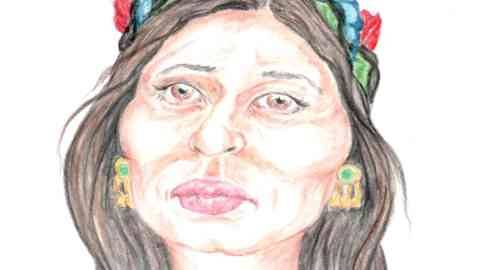
View On WordPress
#art#aztec#cómic#cómics#Dibujix#dibujo#Draw#Drawing#Hernán Cortés#historieta#humor#illustration#ilustración#indigenous#malinche#México#nahuatl#Sketch#tbo#tebeos#tlaxcala#viñeta#WebComic
0 notes
Photo
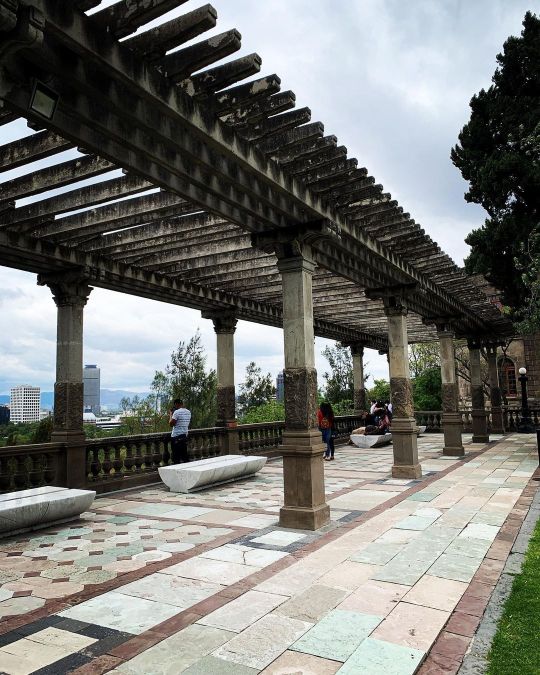
“Nadie puede pedir perdón por la historia. Ésta es la que es y somos hijos de ella.” #castillodechapultepec #castillo #chapultepec #bosquedechapultepec #historia #cdmx #mexico #vitral #mirador #bosque #maximiliano #carlota #reforma #mexico #mural #azteca #craneo #cuahutemoc #hernancortes #independenciademexico #revolucion #jardin #pergolado #carruajes #museodehistoria (en Museo Nacional de Historia, Castillo de Chapultepec) https://www.instagram.com/p/CQU9kxVjhUx/?utm_medium=tumblr
#castillodechapultepec#castillo#chapultepec#bosquedechapultepec#historia#cdmx#mexico#vitral#mirador#bosque#maximiliano#carlota#reforma#mural#azteca#craneo#cuahutemoc#hernancortes#independenciademexico#revolucion#jardin#pergolado#carruajes#museodehistoria
4 notes
·
View notes
Photo

Conquistador
The conquistadors, meaning "conquerors", were Iberian military adventurers who operated as the vanguard of empires in the 15th and 16th centuries by exploring areas of the world unknown to Europeans, defeating indigenous armies, and then distributing loot and land. By the mid-16th century, conquistadors had been replaced by a more systematic colonialization process of local government and permanent settlers.
Continue reading...
36 notes
·
View notes
Photo

NEW MAP: North America 1523: Spanish Consolidation in Mexico (25 Jul 1523) https://buff.ly/2JK3lk5 Cortés’ capture of Tenochtitlan (1521) brought an end to the Aztec Empire and made Spain the dominant power in Mexico. Over the next years Cortés sent out Spanish expeditions, utilizing Tlaxcalan manpower, to assert his authority over Metztitlan, Tututepec, the Tarascan State, the Kingdom of Colliman, and other states. #16thcentury #americanhistory #aztec #aztecs #carta #cartografia #cartographic #conquistador #hernancortes #historia #historicalplace #histories #historybuff #historylovers #historymaker #historymatters #ageofdiscovery #newspain #maps #mexicanhistory #mexico #mixtec #northamerica #oldmaps #maya #riskgame #spain #tarascan #tlaxcala #newmap (at Metztitlán, Hidalgo) https://www.instagram.com/p/B-rMfP9gtJY/?igshid=1s5bjikpev9an
#16thcentury#americanhistory#aztec#aztecs#carta#cartografia#cartographic#conquistador#hernancortes#historia#historicalplace#histories#historybuff#historylovers#historymaker#historymatters#ageofdiscovery#newspain#maps#mexicanhistory#mexico#mixtec#northamerica#oldmaps#maya#riskgame#spain#tarascan#tlaxcala#newmap
11 notes
·
View notes
Photo

Évolution de l'Interprétation de la Conquête Espagnole des Amériques
La chute, en 1519, de Tenochtitlan, capitale de l'empire mexica ou aztèque, comme on l'appellerait plus tard, jeta les bases de l'empire colonial espagnol sur le continent nord-américain. C'était la première fois que les Européens soumettaient un État hautement organisé en dehors du monde qu'ils connaissaient jusqu'alors. Ce faisant, ils jetèrent les bases des premiers empires coloniaux mondiaux.
Lire la suite...
1 note
·
View note
Photo
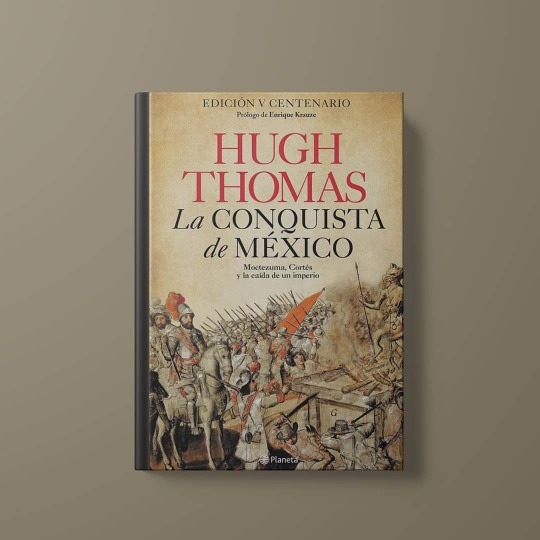
La Conquista de México (Edición V Centenario), de Hugh Thomas. ➡️ Link en Bio con todas las recomendaciones del perfil ⬅️ Sinopsis: Con motivo de esta nueva edición repetimos un título que ya publicamos hace tiempo. En 1519, la armada de Hernán Cortés, con quinientos infantes y once buques, zarpó de Cuba desoyendo órdenes directas con la intención manifiesta de llegar al corazón del mayor imperio del Nuevo Mundo. Cuando finalmente se adentraron en Tenochtitlán, fueron recibidos con honores por Moctezuma y su pueblo, quienes les reverenciaron como si de dioses se trataran. No obstante, el posterior secuestro y destitución de Moctezuma, así como la destrucción de la capital, convierten la conquista de México en uno de los episodios más cautivadores y trágicos de la historia del mundo. «Una obra suprema y hasta ahora insuperada de conocimiento histórico. Un libro para todas las épocas.» Del prólogo de Enrique Krauze. Editado por @editorialplaneta @planetadelibros #librosrecomendados #libros #libroshistoria #librosdehistoria #librosdehistoriadeespaña #historiaparatodos #historiadeespaña #conquistademexico #conquistadeamerica #nuevomundo #descubrimientodeamerica #hernancortes #leer #leerhistoria #saberhistoria #conocerlahistoria #aprenderhistoria #lahistoriamola #mejoreslibrosdehistoria #megustalahistoria #nosolohistoria #somoshistoria #moctezuma #tenochtitlan #todohistoria https://www.instagram.com/p/CF1VMIqiI80/?igshid=eif8gx0vsfg3
#librosrecomendados#libros#libroshistoria#librosdehistoria#librosdehistoriadeespaña#historiaparatodos#historiadeespaña#conquistademexico#conquistadeamerica#nuevomundo#descubrimientodeamerica#hernancortes#leer#leerhistoria#saberhistoria#conocerlahistoria#aprenderhistoria#lahistoriamola#mejoreslibrosdehistoria#megustalahistoria#nosolohistoria#somoshistoria#moctezuma#tenochtitlan#todohistoria
1 note
·
View note
Photo

Una fotografía que tomé de la estatua del gran olvidado, Hernán Cortés, en Cáceres, Extremadura, España. Hace casi trece años tras llegar a México leí las Cartas de Relación de Cortés y decidí visitar todos los lugares que se mencionaban en ellas. Lo que encontré lo he plasmado en mi nuevo libro Un mundo maravilloso. https://chicosanchez.com/blog/f/un-viaje-maravilloso---mi-nuevo-libro #libros #chicosanchez #mayas #mexico #españa #historia #viajes #hernancortes #caceres #Extremadura https://www.instagram.com/p/CFdevJspknM/?igshid=nsbwmboqnx45
1 note
·
View note
Photo

We are inching 📏 closer to the premiere of my 🎼 opera 𝘓𝘢 𝘔𝘢𝘭𝘪𝘯𝘤𝘩𝘦 - 𝘛𝘳𝘢𝘪𝘵𝘰𝘳 | 𝘚𝘢𝘷𝘪𝘰𝘳. Today we marked, blocked and filmed 🎥 at the Albuquerque Museum 🖼 . This cast has really put in the work and it's going to be a treat 🍬 for those that get to witness one of our two performances 🎭 . We premiere the work this Thursday July 21st (6:30pm) & on Sunday (1pm). Both are free! @abqmuseum 📸 @revfighter • • • #albuquerque #abq #newmexico #nm #opera #operasw #operasingers #operasingersofinstagram #lamalinche #nathanfelix #nathanfelixdirector #nathanfelixcomposer #hernancortes (at Albuquerque Museum) https://www.instagram.com/p/CgNzjZYNqKt/?igshid=NGJjMDIxMWI=
#albuquerque#abq#newmexico#nm#opera#operasw#operasingers#operasingersofinstagram#lamalinche#nathanfelix#nathanfelixdirector#nathanfelixcomposer#hernancortes
0 notes